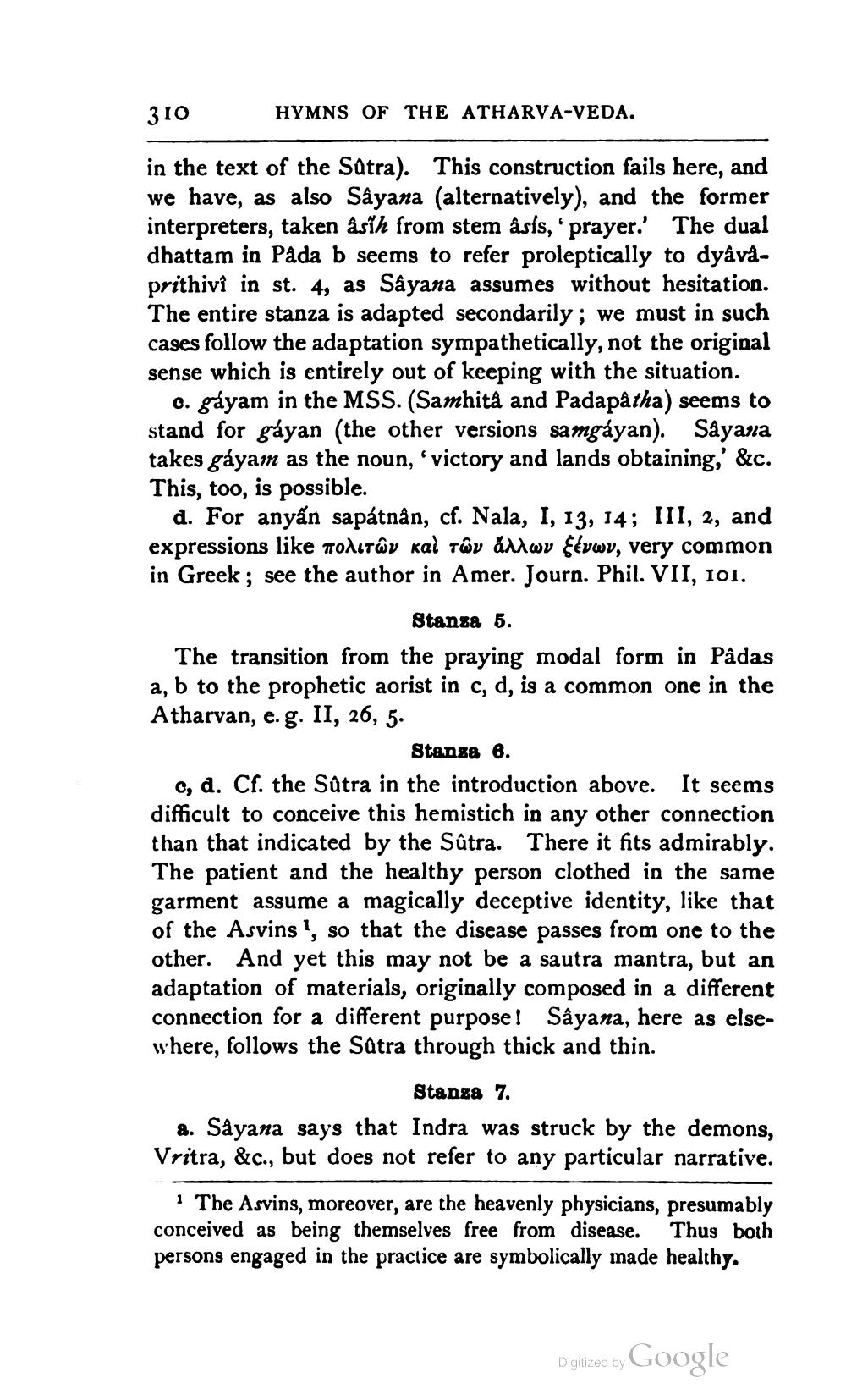________________
310
HYMNS OF THE ATHARVA-VEDA.
in the text of the Satra). This construction fails here, and we have, as also Sâyana (alternatively), and the former interpreters, taken asih from stem åsís, ' prayer.' The dual dhattam in Påda b seems to refer proleptically to dyavaprithivi in st. 4, as Sayana assumes without hesitation. The entire stanza is adapted secondarily; we must in such cases follow the adaptation sympathetically, not the original sense which is entirely out of keeping with the situation.
0. gayam in the MSS. (Samhita and Padapatha) seems to stand for gayan (the other versions samgáyan). Sayana takes gáyam as the noun, 'victory and lands obtaining,' &c. This, too, is possible.
d. For anyản sapátnân, cf. Nala, I, 13, 14; III, 2, and expressions like πολιτών και των άλλων ξένων, very common in Greek; see the author in Amer. Journ. Phil. VII, 101.
Stanga 5. The transition from the praying modal form in Pâdas a, b to the prophetic aorist in c, d, is a common one in the Atharvan, e.g. II, 26, 5.
Stanga 6. c, d. Cf. the Satra in the introduction above. It seems difficult to conceive this hemistich in any other connection than that indicated by the Sûtra. There it fits admirably. The patient and the healthy person clothed in the same garment assume a magically deceptive identity, like that of the Asvins", so that the disease passes from one to the other. And yet this may not be a sautra mantra, but an adaptation of materials, originally composed in a different connection for a different purpose! Sâyana, here as elsewhere, follows the Satra through thick and thin.
Stanga 7. a. Sayana says that Indra was struck by the demons, Vritra, &c., but does not refer to any particular narrative.
The Asvins, moreover, are the heavenly physicians, presumably conceived as being themselves free from disease. Thus both persons engaged in the practice are symbolically made healthy.
Digized by Google




